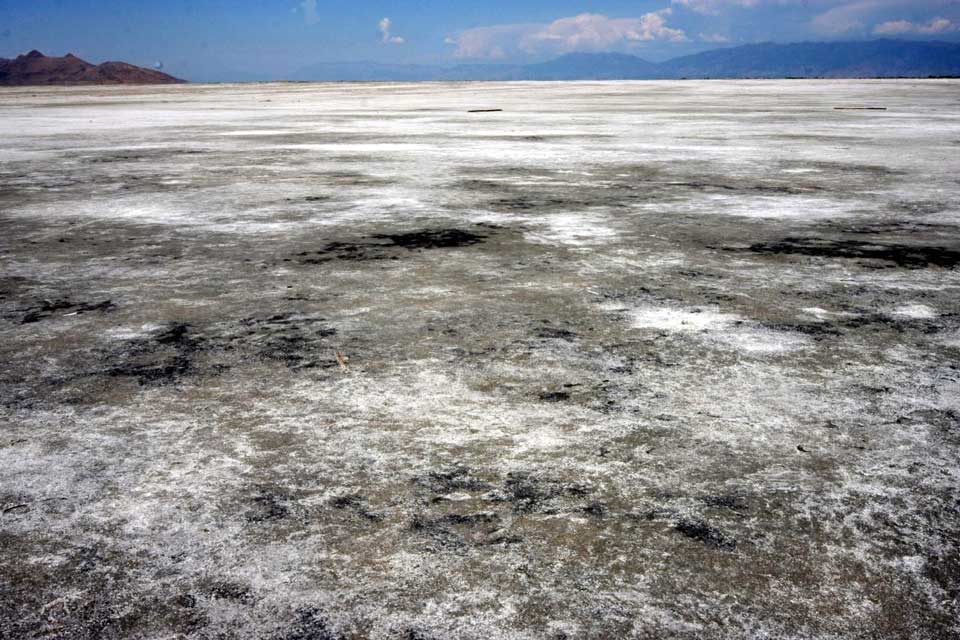Utah’s Great Salt Lake has always been sensitive to changes in climate and water inflow, but new research shows human activity has pushed it into a state not seen for at least 2,000 years.
 Great Salt Lake (Bruce Tuten/Flickr Creative Commons)
Great Salt Lake (Bruce Tuten/Flickr Creative Commons)A team led by University of Utah (press release) geoscientist Gabriel Bowen analyzed lakebed sediments to reconstruct how the lake’s water and carbon cycles have changed over the past 8,000 years. Their research is published in Geophysical Research Letters. “Lakes are great integrators,” Bowen explained. “They’re a point of focus for water, for sediments, and also for carbon and nutrients.”
By measuring oxygen and carbon isotopes in the sediments, Bowen and his colleagues could track how the balance of inflow, evaporation, and organic matter shifted over time. The records reveal two big, human-driven changes. The first came in the mid-19th century, when Mormon settlers arrived in the Salt Lake Valley and built irrigation systems. The farmland they created increased the amount of vegetation and organic carbon flowing into the lake, creating a new biogeochemical balance not seen during the previous eight millennia.
The second major shift happened in 1959, when Union Pacific built a 20-mile causeway across the lake to replace an older trestle. That construction divided the lake into a North Arm with no river inflows and a South Arm (Gilbert Bay) that still receives river water. As Bowen noted, “We changed the hydrology of the lake fundamentally and gave it an outflow.” This disrupted the salinity and water balance, making the South Arm fresher than it would otherwise have been, but also creating an artificial split in the ecosystem.
The significance of this study lies in its contribution to filling the “middle scale” of the lake’s history — between the deep geologic changes of thousands of years ago and the short-term drought observations we observe today. Understanding how the lake responds to human settlement and engineering projects helps scientists and policymakers recognize the system’s sensitivity and the speed with which it can be altered. “We see a big shift in the carbon isotopes … toward more organic sources,” Bowen said, marking a fundamental change in the lake’s ecology.
These changes matter far beyond geology. The Great Salt Lake supports millions of migratory birds, including pelicans, grebes, and avocets, which depend on the lake’s unique mix of brine shrimp and brine flies for food. When salinity and water levels shift, these food webs are disrupted. The causeway, for example, made the North Arm much saltier, creating water chemistry so harsh that few organisms survive there.
- Student report by Cylee Casselbury at Kearns H.S. in West Valley, Utah
On the human side, the shrinking lakebed exposes toxic dust that can blow into Salt Lake City, posing a threat to air quality and public health. The economic impacts are also large: industries that harvest brine shrimp and minerals rely on a stable lake.
Bowen’s research highlights how rapidly human actions can alter ecosystems that had appeared stable for thousands of years. As Utah grapples with drought and water-use decisions today, the study serves as a warning: the choices made now regarding irrigation, river diversions, or infrastructure will be preserved in the sediments and in the survival of species for centuries to come.















